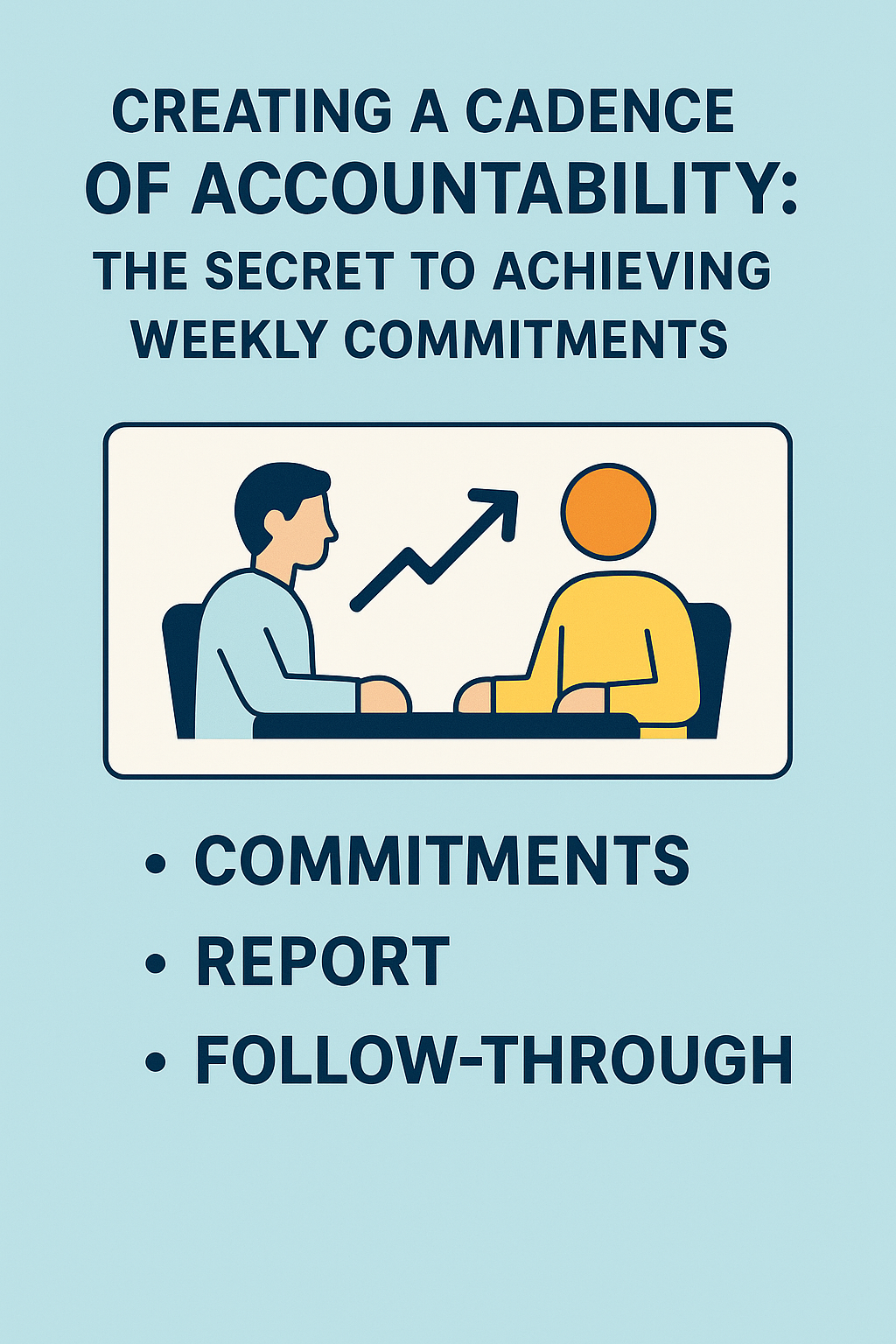Setting goals is important. Tracking progress is essential. But the real difference-maker in the 4DX method is found in Discipline 4: Create a Cadence of Accountability. It’s this consistent rhythm of commitment and follow-through that transforms planning into execution.
In this article, we’ll explore what a cadence of accountability is, why it’s so powerful, and how to implement it effectively—whether you’re working solo or leading a team.
What Is a Cadence of Accountability?
A cadence of accountability refers to a recurring, structured meeting—typically weekly—where individuals or teams:
- Review performance
- Report on past commitments
- Update the scoreboard
- Make new commitments for the next period
It creates a steady rhythm of action and correction, helping you stay focused on your Wildly Important Goal (WIG) despite daily distractions.
Why Weekly Accountability Works
Weekly accountability works for three main reasons:
- It keeps the WIG top of mind: You can’t ignore your goal if you’re reporting on it weekly.
- It builds momentum: Weekly progress adds up quickly.
- It drives commitment: Knowing you’ll be held accountable increases follow-through.
The magic isn’t in the pressure—it’s in the rhythm. A consistent cadence turns goal pursuit into a habit.
Elements of a Great Accountability Session
Whether you’re doing it alone or with a team, every accountability session should include three key parts:
- Report on Last Week’s Commitment
- Did you complete what you said you would?
- If not, what got in the way?
- Review the Scoreboard
- Are we winning or losing?
- What trends or issues are we seeing?
- Make a New Commitment
- What specific, lead-measure-driven action will you take this week?
This structure ensures reflection, clarity, and forward motion.
How to Run an Effective Accountability Meeting
If you’re leading a team, keep meetings short (15–30 minutes), focused, and positive. Here’s a sample agenda:
- Quick check-in: How is everyone feeling?
- Each member reports on last week’s action
- Review the team’s scoreboard
- Identify blocks, share quick wins
- Each member commits to next week’s action
Tip: Avoid using this meeting to solve problems or brainstorm—stay focused on execution and commitment.
What Accountability Looks Like for Individuals
If you’re working solo, you can still benefit from accountability. Try:
- Journaling weekly: Write your commitment, track your action, reflect on results.
- Using a planner: Review lead measures and progress on the scoreboard each week.
- Finding an accountability partner: Meet virtually or in person every week to report and commit.
It’s not about shame—it’s about staying connected to your goal with honesty and consistency.
The Role of Commitment Language
In effective accountability sessions, language matters. Commitments should be:
- Clear: “I will write 500 words every morning” (not “I’ll try to write more”)
- Measurable: “I will contact 10 potential clients this week”
- Actionable: Focused on what you can do—not what others must do
This level of clarity turns intention into action.
Why Most Teams Avoid Accountability—and What to Do About It
Accountability is often misunderstood as blame or punishment. In reality, healthy accountability is about ownership, not guilt.
To build a culture of accountability:
- Start small: One commitment per person
- Lead by example: Make and report your own commitments first
- Keep it positive: Celebrate wins, learn from misses
- Be consistent: Weekly rhythm builds trust and momentum
Tools for Maintaining Accountability
Here are some tools to help you keep accountability sessions consistent:
- Google Sheets or Excel – Track each week’s commitments
- Trello or Asana – Assign and check off weekly tasks
- Calendar reminders – Schedule your accountability time
- Shared dashboards – Keep the scoreboard visible
The tool doesn’t matter as much as the habit.
Real-World Example: Accountability in Action
Let’s say you’re a designer trying to grow your online portfolio. Your WIG: “Add 10 high-quality case studies to my website in 8 weeks.”
Your weekly commitments might look like:
- Week 1: Organize and select 3 completed projects
- Week 2: Write draft copy for 2 projects
- Week 3: Design layouts for 2 case studies
- Week 4: Publish the first 2 projects
Each week, you review progress, update your scoreboard, and plan the next step. No guesswork—just steady, focused execution.
The Long-Term Power of Weekly Commitments
It’s easy to get excited about big goals. But without weekly commitments, that excitement fades fast.
Creating a cadence of accountability builds:
- Discipline
- Clarity
- Self-respect
- Results
It’s the quiet, consistent work behind every breakthrough.
Make Accountability Part of Your Life
You don’t need to wait for a manager or a team. You can build a system of accountability right now.
Ask yourself:
- What’s my most important goal?
- What lead measure will I focus on this week?
- Who or what will hold me accountable?
Then set a time. Show up every week. Review, report, recommit.
This is where real execution begins.
